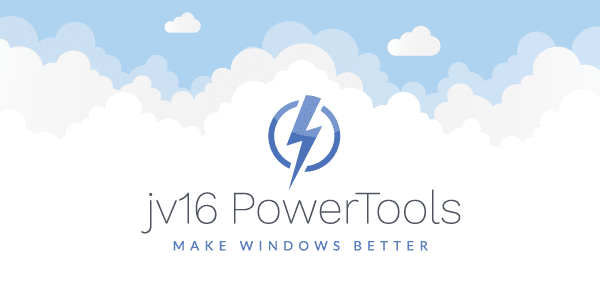The developer of RegCleaner, jv16 PowerTools, Uninstalr, WinFindr, Startup Timer, ScreenshotX, System Examiner and Windows Update Fixer.
Benchmark of Top Three Windows Registry Cleaners
This test was performed in January of 2017
Introduction
Based on the benchmark results of the top ten Windows registry cleaners performed in October of 2016, Macecraft Software continues its tradition of comparative tests with a focus on the top three Windows registry cleaners that ranked highest in our most recent tests.
Tested Software Products
The most recent test was published in October of 2016 and was used to pick the top three participants for the current case study.
This test continued the tradition that Macecraft Software has established while releasing similar registry cleaner comparison test reports alongside every recent major product release. For the release of jv16 PowerTools, the report from October of 2016 covered the following tests:
- Test 1: Number of errors found
- Test 2: Windows startup time (measured with a stopwatch)
- Test 3: Windows startup time (measured with software)
Based on the Benchmark of Top Ten Windows Registry Cleaners, we have temporarily narrowed our focus for this test on the top three previously ranked products:
- Auslogics Registry Cleaner
- CCleaner
- jv16 PowerTools
Each of the top three Windows registry cleaners was downloaded from their official website and installed using their default settings.
| Software Product | Version | Installer file size | Installation size | License | Comments |
| Auslogics Registry Cleaner | 6.1.1.0 | 8.34 MB | 28.1 MB | Free for personal and commercial use |
|
| CCleaner | 5.26.5937 | 8.4 MB | 19.1 MB | Free for non-commercial use |
|
| jv16 PowerTools | 4.1.0.1666 | 8.1 MB | 19.8 MB | 60 days trial for personal and commercial use |
|
Test Environment
The current benchmark test of the top three Windows registry cleaners was performed using an Oracle VirtualBox (version: 5.1.14 r112924) virtual environment running Windows 10 with 4 CPU cores annd 8 GB of RAM assigned.
In order to ensure that no system updates or other updates are downloaded during the testing procedure, the system was disconnected from the Internet before approaching each test candidate.
The virtual machine was run on a host computer running Ubuntu Linux 16.04 LTS (64 bit) with an Intel-i5 processor, 20 GB RAM and a SSD system disk.
Verifiability
All of the past and current test results are accompanied by screenshots and video recordings which have been saved during various testing phases in order to address some of the most common test result credibility concerns for this type of studies.
Test Case: Number of errors found on a heavily damaged system
For the purposes of this test, we wanted to assess the performance of the top three Windows registry cleaners (rank based on our previous tests). In order to determine the best registry cleaner that can be used at the start of 2017 to successfully identify, clean and fix as many Windows issues as possible, we created a virtual system that was previously bloated with third party software, which have then been intentionally damaged.
The exact steps to reproduce the test environment are as follows:Step 1) Installed the following common third party software: Chrome, Firefox, TeamViewer 12, ImgBurn, TeraCopy, Revo, Classic Start, Thunderbird, AIM, WinRAR, iTunes, Spotify, IrfanView, LibreOffice, Evernote, Steam, KeePass Step 2) After all of the software have been installed, the virtual system has been rebooted for all system settings changes to be applied.
Step 3) Each of the third party software installed on the test system was run at least once, to make sure its files and registry keys have been written to disk.
Step 4) After all of the software have been run at least once, the virtual system has been rebooted for all system settings changes to be applied.
Step 5) Intentional heavy damage (file deletion) has been applied to each of the third party software folders installed on disk, in an attempt to obtain a heavily bloated, heavily damaged test environment with plenty of registry keys linking to files that no longer exist (most software actually behave in this way after their own uninstaller is used e.g. leave a lot of junk behind).
Step 6) After this heavily bloated, heavily damaged test environment was created, the test system was taken offline, rebooted and a snapshot was saved. This facilitates reuse of the exact same testing ground for all of the top three registry cleaners tested, allowing us to determine the best registry cleaner for this particular use case scenario (which registry cleaner is able to find the most issues, once the installed third party software were damaged).
The following screenshot was taken just before the last step, while emptying the Recycle Bin of any previously deleted files. This will ensure the fact that the current test is focused on the registry cleaning performance of each of the tested products. Cleaning of invalid or orphaned files is outside of the purpose of this test. Any erroneous files found by the registry cleaners tested will not be counted as part of the final test score.
Test Summary: Auslogics Registry Cleaner
Auslogics Registry Cleaner was the first product tested (we tested the products in alphabetical order). The software has been installed with default options and the entire experience recorded on video for verifiability purposes.After an extremely fast scan that took just under 10 seconds, Auslogics Registry Cleaner was able to find 2340 problems.
Test Summary: CCleaner
CCleaner was the second product tested. The software has been installed with default options and the entire experience recorded on video for verifiability purposes.After an extremely fast scan that took just under 10 seconds, CCleaner was able to find 2094 problems.
Test Summary: jv16 PowerTools
jv16 PowerTools was the third product tested. The software has been installed with default options and the entire experience recorded on video for verifiability purposes.After a scan that took exactly 177 seconds, jv16 PowerTools was able to find 15468 system problems.
Conclusions after testing the top three Windows registry cleaners
Test results show that registry cleaner scan speed is not everything. While Auslogics Registry Cleaner and CCleaner were extremely fast to use, jv16 PowerTools was able to find approximately 7 times more system problems than each of the other two products tested. Simple & sinister!
For the purposes of this test, jv16 PowerTools > Clean and SpeedUp My Computer was run using its default settings. Using higher scanner heuristic settings, jv16 PowerTools may be able to find even more system problems, however, it may also require more time to scan. Considering that jv16 PowerTools > Clean and SpeedUp My Computer tool is not meant to be used many times per day (recommended: periodic in-depth system cleaning e.g. weekly or monthly), the time of scan versus number of issues found trade-off should be acceptable for the given and tested purpose of use.
History
Starting with February of 2009 (when the first test of this kind was published on the market), Macecraft Software has published a total of six registry cleaner product comparison studies:
- Registry Cleaner Review and Performance Comparison Study – February, 2009
- In-Depth Review of 31 The Most Popular Registry Cleaner Products – April, 2009
- Comparison of 176 Registry Cleaner Products – October, 2010
- Registry Cleaner Benchmark Study – September, 2013
- Benchmark Report of 133 Windows Optimization Software Products – March, 2015
- Registry Cleaner Performance Comparison Study – October, 2016


